Pubertal activation of estrogen receptor α in the medial amygdala is essential for the full expression of male social behavior in mice
- PMID: 27325769
- PMCID: PMC4941494
- DOI: 10.1073/pnas.1524907113
Pubertal activation of estrogen receptor α in the medial amygdala is essential for the full expression of male social behavior in mice
Abstract
Testosterone plays a central role in the facilitation of male-type social behaviors, such as sexual and aggressive behaviors, and the development of their neural bases in male mice. The action of testosterone via estrogen receptor (ER) α, after being aromatized to estradiol, has been suggested to be crucial for the full expression of these behaviors. We previously reported that silencing of ERα in adult male mice with the use of a virally mediated RNAi method in the medial preoptic area (MPOA) greatly reduced sexual behaviors without affecting aggressive behaviors whereas that in the medial amygdala (MeA) had no effect on either behavior. It is well accepted that testosterone stimulation during the pubertal period is necessary for the full expression of male-type social behaviors. However, it is still not known whether, and in which brain region, ERα is involved in this developmental effect of testosterone. In this study, we knocked down ERα in the MeA or MPOA in gonadally intact male mice at the age of 21 d and examined its effects on the sexual and aggressive behaviors later in adulthood. We found that the prepubertal knockdown of ERα in the MeA reduced both sexual and aggressive behaviors whereas that in the MPOA reduced only sexual, but not aggressive, behavior. Furthermore, the number of MeA neurons was reduced by prepubertal knockdown of ERα. These results indicate that ERα activation in the MeA during the pubertal period is crucial for male mice to fully express their male-type social behaviors in adulthood.
Keywords: estrogen receptor α; medial amygdala; pubertal period; social behavioral network; testosterone.
Conflict of interest statement
The authors declare no conflict of interest.
Figures


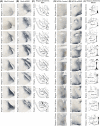
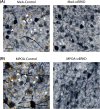


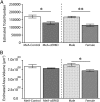
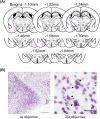
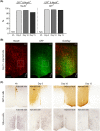
References
-
- Ogawa S, et al. Modifications of testosterone-dependent behaviors by estrogen receptor-α gene disruption in male mice. Endocrinology. 1998;139(12):5058–5069. - PubMed
-
- Toda K, Saibara T, Okada T, Onishi S, Shizuta Y. A loss of aggressive behaviour and its reinstatement by oestrogen in mice lacking the aromatase gene (Cyp19) J Endocrinol. 2001;168(2):217–220. - PubMed
-
- Toda K, et al. Oestrogen at the neonatal stage is critical for the reproductive ability of male mice as revealed by supplementation with 17β-oestradiol to aromatase gene (Cyp19) knockout mice. J Endocrinol. 2001;168(3):455–463. - PubMed
Publication types
MeSH terms
Substances
LinkOut - more resources
Full Text Sources
Other Literature Sources

